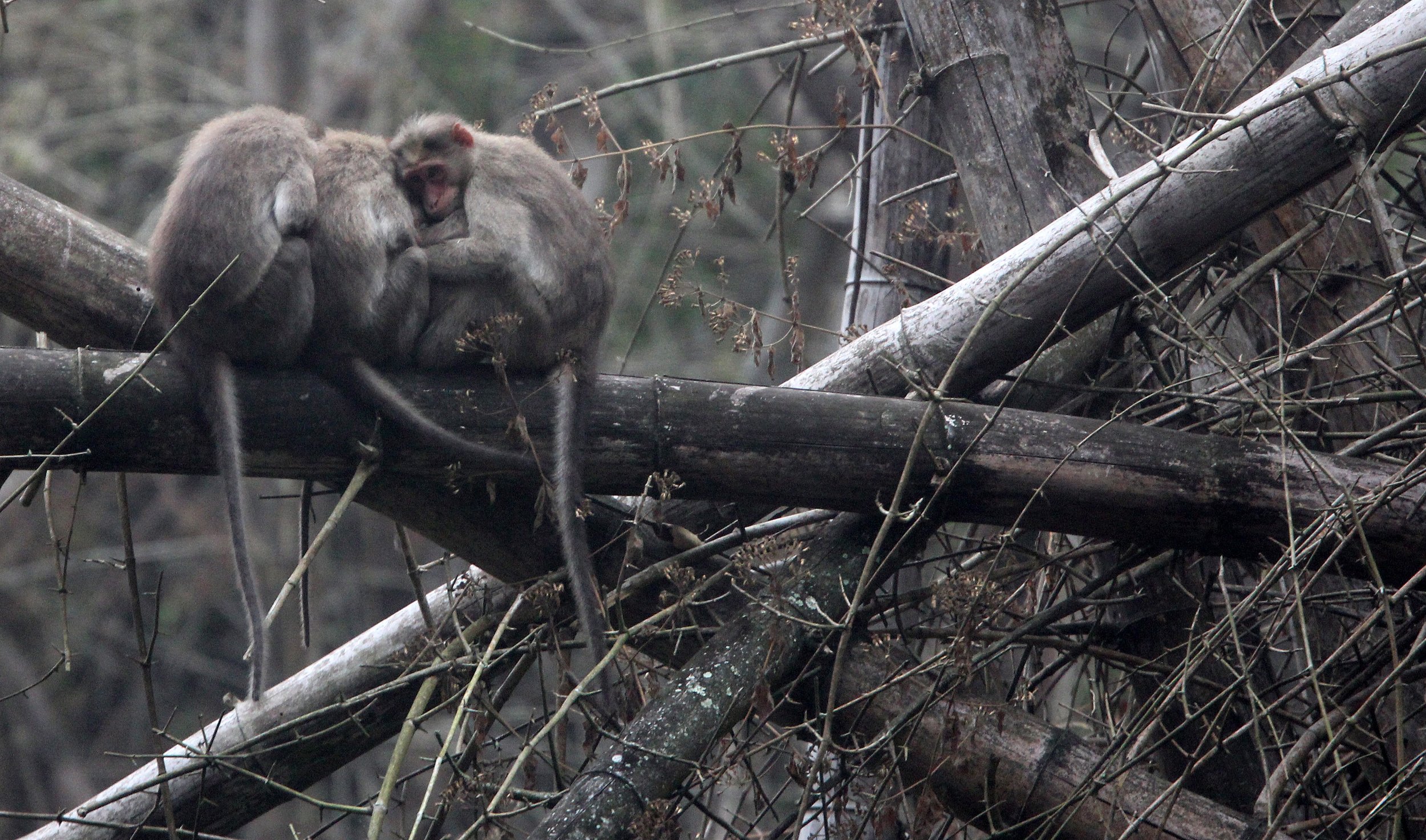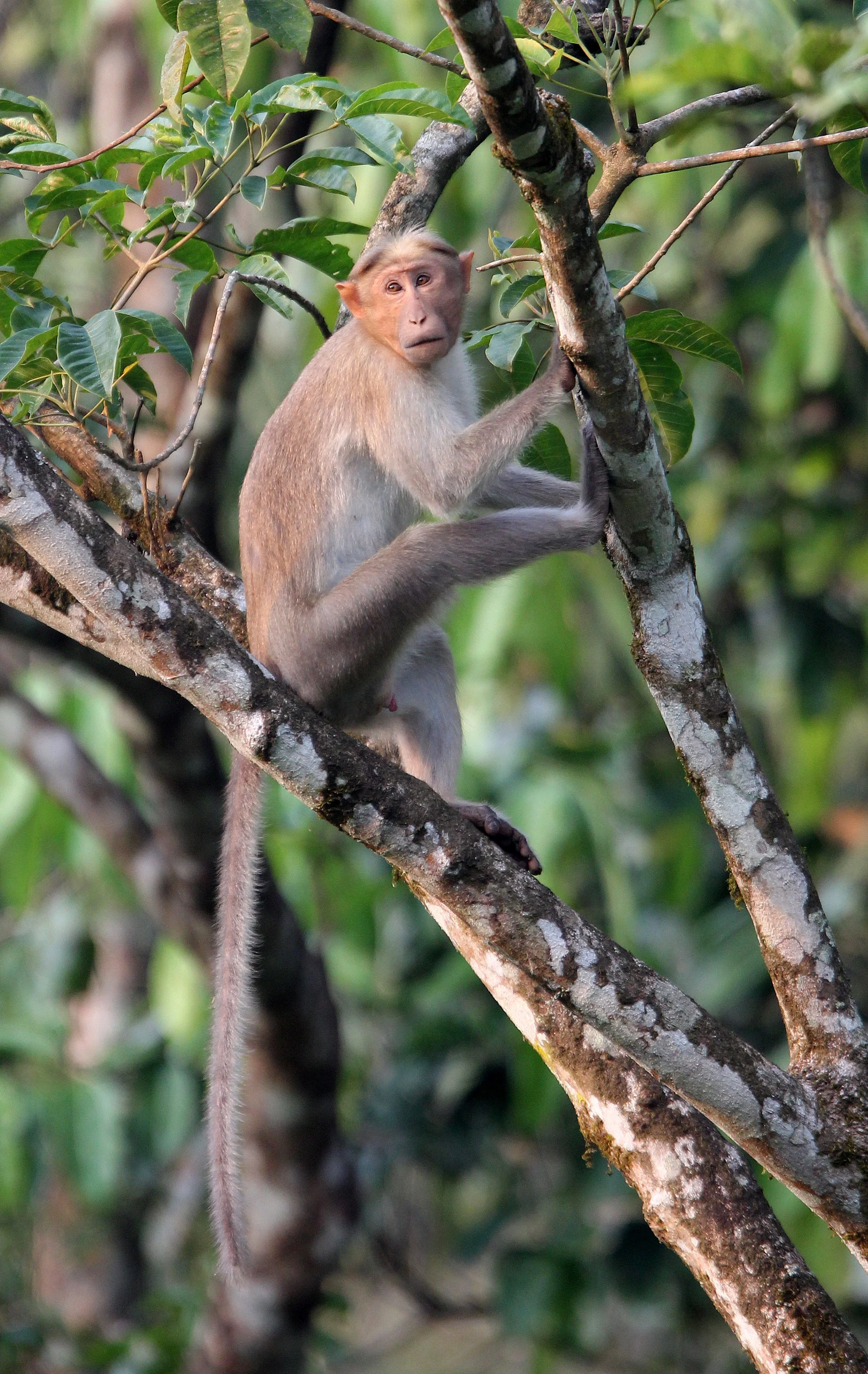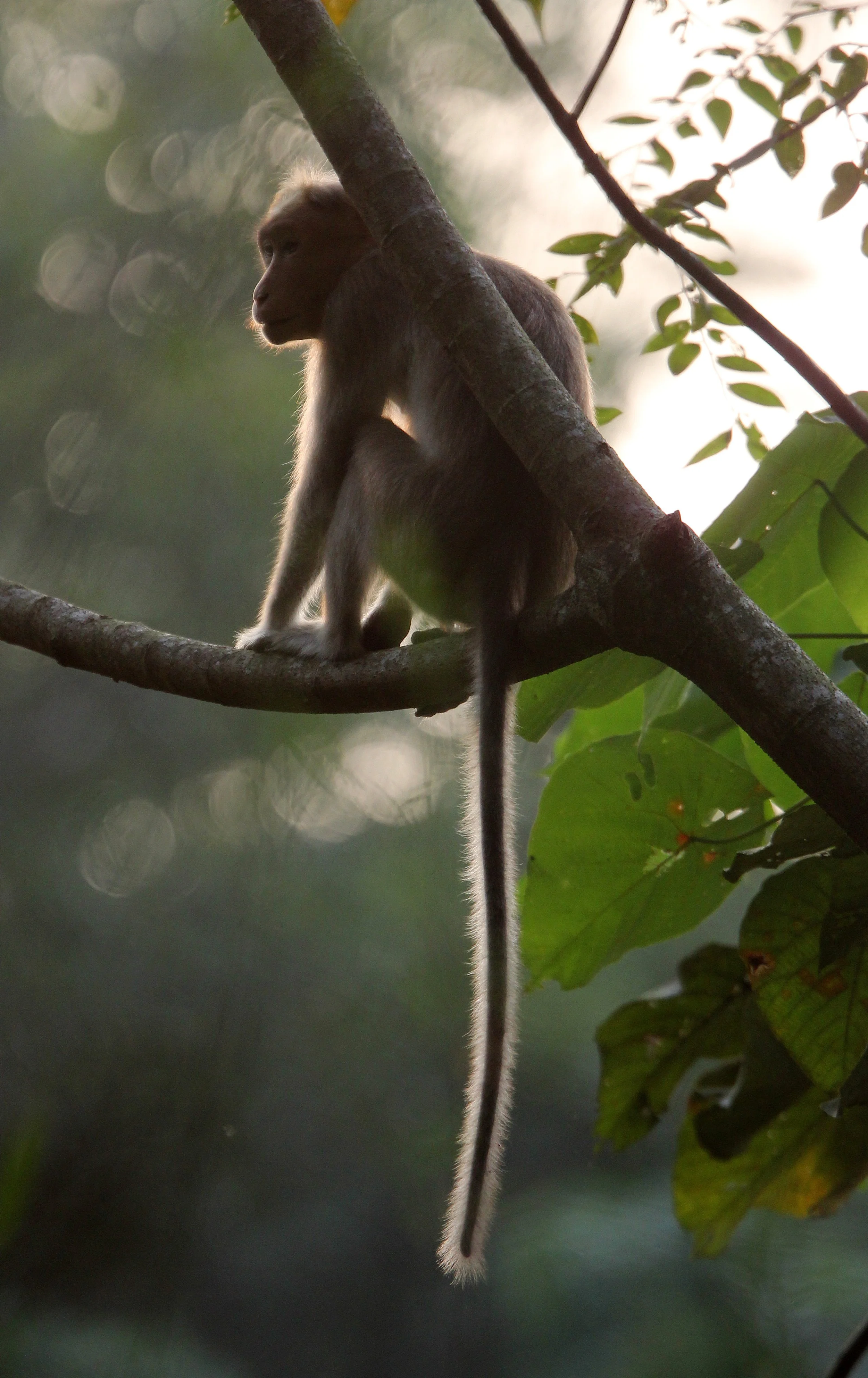
Bonnet Macaque
The bonnet macaque (Macaca radiata), also known as zati, is a species of macaque endemic to southern India. Its distribution is limited by the Indian Ocean on three sides and the Godavari and Tapti Rivers, along with its related competitor the rhesus macaque in the north. Land use changes in the last few decades have resulted in changes in its distribution boundaries with the rhesus macaque, raising concern for its status in the wild.
The bonnet macaque is diurnal, arboreal, and terrestrial. Males have a head-body length of 51.5–60 cm (20.3–23.6 in) with a 51–69 cm (20–27 in) tail while females are 34.5–52.5 cm (13.6–20.7 in) with a 48–63.5 cm (18.9–25.0 in) tail. Males weigh 5.4–11.6 kg (12–26 lb) and females 2.9–5.5 kg (6.4–12.1 lb). It can live up to 35 years in captivity.
The bonnet macaque feeds on fruits, nuts, seeds, flowers, invertebrates, and cereals. In southern India, this macaque exists as commensal to humans, feeding on food given by humans and raiding crops and houses.
Two subspecies of bonnet macaques have been identified:
Macaca radiata radiata, pale-bellied bonnet macaque, found in South and West India between the Tapti River, Palni Hills, and Timbale. In the 16th century it was introduced to the Mascarene Islands (Mauritius and Réunion).
Macaca radiata diluta, dark-bellied bonnet macaque, found in Southeast India in the states of Kerala and Tamil Nadu. From the southern coast north to Kambam at the base of the Palni Hills and east to Puducherry
Northern Bonnet Macaque (Macaca radiata diluta) Topslip National Park Tamil Nadu India





















Southern Bonnet Macaque (Macaca radiata radiata) Thattekad Nature Reserve Kerala





















